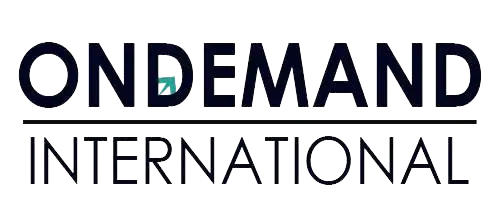
Canada is one of the largest trading nations in the world, with a total trade value exceeding CAD 1.5 trillion in 2023. The country maintains free trade agreements (FTAs) with over 50 nations, including the United States, the European Union, and key Asian markets, making it an ideal hub for global trade. Whether you’re planning to open an import-export business in Canada or expand your existing operations, the country offers a business-friendly environment, strong infrastructure, and diverse market opportunities.
Through this detailed guide, we will cover the steps to start an import-export business in Canada. Furthermore, we will also cover the key benefits, requirements and best locations to launch an import-export company in Canada.
Requirements to Open an Import-Export Business in Canada
To legally operate an import-export business in Canada, you must meet the following requirements:
- Register Your Business: Choose a business structure and register with Corporations Canada or your provincial business registry.
- Obtain a Business Number (BN): Register with the Canada Revenue Agency (CRA) to receive your Business Number (BN).
- Get Import-Export Licenses & Permits: Some goods require additional approvals from agencies like Global Affairs Canada or the Canadian Food Inspection Agency (CFIA).
- Register for GST/HST: If your revenue exceeds CAD 30,000 annually, you must register for Goods and Services Tax (GST) or Harmonized Sales Tax (HST).
- Compliance with Customs Regulations: Follow CBSA regulations, classify goods correctly using Harmonized System (HS) codes, and ensure proper documentation.
Step-by-Step Guide to Open an Import-Export Business in Canada
1. Select the Business Structure:
In order to launch an import-export business, the first step involves deciding the legal structure of your business in Canada. You can choose to open a sole proprietorship, partnership, or corporation.
Many businesses in Canada opt for incorporation, which provides personal liability protection and tax benefits.
2. Register Your Business Name:
The second step for opening an import-export company involves choosing a name for your business.
Our experts are here to help you select the perfect business name, verify its availability, and assist you with the registration process with the appropriate provincial or territorial government.
3. Obtain a Business Number (BN):
You need to register for a Business Number with the Canada Revenue Agency (CRA) to facilitate tax reporting and other business operations.
4. Register for GST/HST:
If your business earns over CAD 30,000 annually, you must register for Goods and Services Tax (GST) or Harmonized Sales Tax (HST).
Profitable Products to Trade
The best way to succeed in an import-export business in Canada is to focus on high-demand products.
Here are some of the top imports and exports:
Top Canadian Imports
- Electronics
- Machinery & Equipment
- Pharmaceuticals
- Automobiles
- Clothing & Textiles
Top Canadian Exports
- Energy (Oil & Gas)
- Lumber & Timber
- Minerals & Metals
- Agricultural Products (Wheat, Canola, Seafood)
Best Locations to Launch an Import-Export Business in Canada
Certain Canadian cities offer better access to international markets, transportation infrastructure, and business support services.
The best locations include:
- Toronto, Ontario – Canada’s financial hub with extensive logistics and trade networks.
- Vancouver, British Columbia – Strategic gateway to Asia-Pacific markets with major seaports.
- Montreal, Quebec – Ideal for trade with European markets due to CETA agreements.
- Calgary, Alberta – Strong in energy exports and well-connected transportation routes.
- Halifax, Nova Scotia – Excellent for seafood exports and access to the Atlantic trade routes.
Reason to Open an Import-Export Company in Canada
Strategic Location:
Canada’s proximity to the U.S. and access to key global markets make it a prime choice for trade.
Strong Economy:
With a GDP of over CAD 2.2 trillion (2023), Canada provides a stable business environment.
Supportive Trade Agreements:
FTAs like CUSMA (formerly NAFTA), CETA (EU-Canada), and CPTPP (Asia-Pacific) provide tariff-free or reduced-duty access to global markets.
Government Support:
Agencies like the Trade Commissioner Service (TCS), Business Development Bank of Canada (BDC), and Export Development Canada (EDC) offer financing, market research, and support for import-export businesses in Canada.
Conclusion
Starting an import-export business in Canada is an excellent opportunity due to its stable economy, strong global trade connections, and business-friendly policies. By following the right steps, securing the necessary permits, and leveraging government support, foreign entrepreneurs can successfully launch and expand their import-export company in Canada.
If you’re ready to open an import-export business in Canada, you can reach out to our Canadian incorporation experts from OnDemand International experts.
FAQ’s
No, but having a registered business address in Canada helps with compliance and credibility.
Businesses must register for GST/HST, file annual tax returns, and comply with customs duties and tariffs.
The registration process usually takes 2-4 weeks, but obtaining specialized permits may take longer.
Yes! Foreigners can establish a Canadian corporation and legally operate an import-export company.

